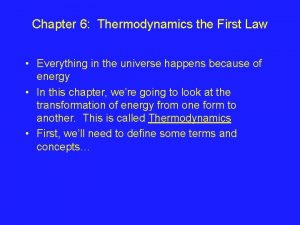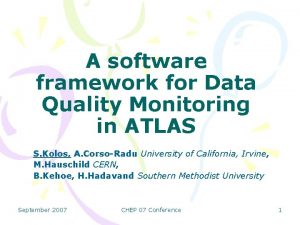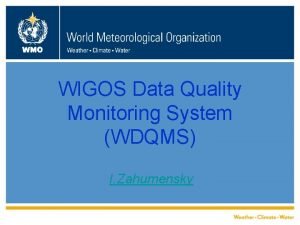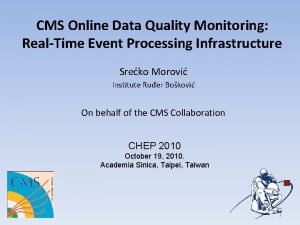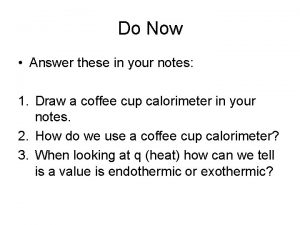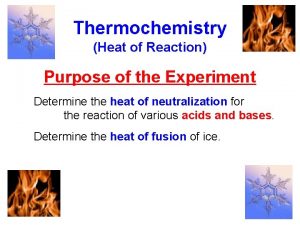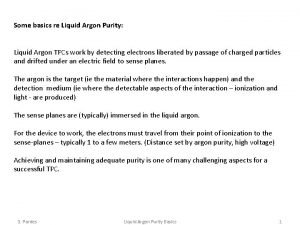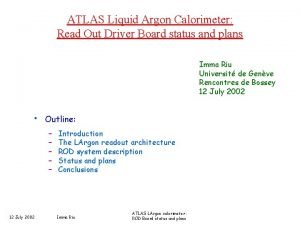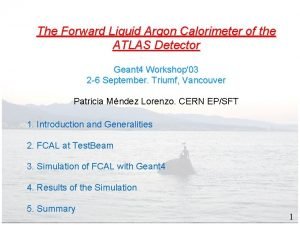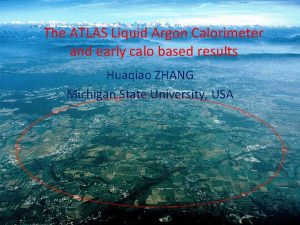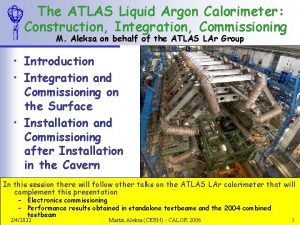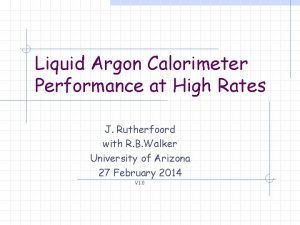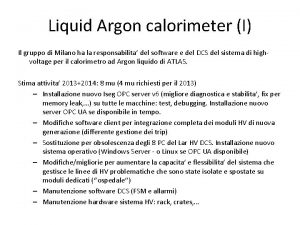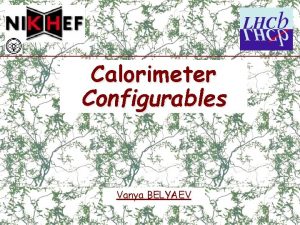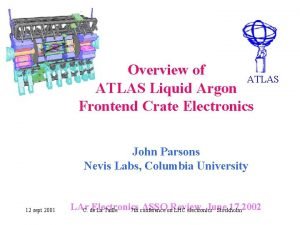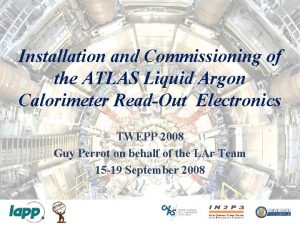ATLAS Liquid Argon Calorimeter Monitoring Data Quality Jessica

















- Slides: 17

ATLAS Liquid Argon Calorimeter Monitoring & Data Quality Jessica Levêque Centre de Physique des Particules de Marseille ATLAS Liquid Argon Calorimeter Group NEC, Varna, Bulgaria 7 -11 th September 2009

Introduction: about ATLAS data Raw data in ATLAS: 1. 6 MByte per event Acquisition rate: 200 Hz 1 day = 2 runs = 2*10 hours of data ~23 TBytes per day Disk Buffer at Tier 0: 610 TBytes After migration of data on tape: 200 Hz readout rate Consequences: Delay between data acquisition and data reconstruction should be less than 5 days Very efficient monitoring and Data Quality feedback loops are required Jessica Levêque Varna - September 2009 2

ATLAS Data Processing Model Jessica Levêque Varna - September 2009 3

The Liquid Argon Calorimeters - Sampling Calorimeter - Active Medium : LAr - Absorber: lead in EM, copper in HEC, copper & tungsten in FCAL ~ 182 000 readout channels Jessica Levêque Varna - September 2009 4

LAr Calorimeter Electronic Jessica Levêque Varna - September 2009 5

LAr Calorimeter Monitoring Detector Control System: To monitor variations of liquid argon purity, temperature High voltage, cooling plant, power supplies Data Integrity: To monitor the electronic front-end boards, and the integrity of the readout data Signal Peak position To monitor the detector timing Misbehaving channels: to spot hot channels that might affect the physics objects reconstruction. Physics objects (electrons, photons, jets…) not a “detector task”, therefore not presented here. Jessica Levêque Varna - September 2009 6

Validation of monitoring tools Extensive use of cosmics data: Experience daily detector operations Validation of the full data chain reconstruction Test and optimization of automatic data quality and monitoring tools In the following: a few examples of calorimeter monitoring during ATLAS cosmics runs Jessica Levêque Varna - September 2009 7

Detector Control System Detector fully operational during last cosmic campaign Requirement for physics: detector coverage and behavior should be stable during a run (oa a luminosity block) Data Quality Flag assessment: warning when the detector states changes during the run. Jessica Levêque Varna - September 2009 8

Online Computation Monitoring For all cells, the energy is computed online and sent to the central acquisition system. For high energy cells (typically above few Ge. V) the individual digits in ADC counts are also readout For these energetic cells, we recompute the energy offline from the digits and compare the result with the energy computed online The plot illustrates the perfect reliability over ~ 40 000 events. The 1 Me. V tails are within the expected accuracy. Jessica Levêque Varna - September 2009 9

Signal Timing Monitoring The digits are readout for each cell above a given threshold (typically above a few Ge. V) For these very energetic cells, we average the pulse shapes per detector region This allows to compare the timing between the different LAr detector parts This check is also very important for ATLAS, as the LAr calorimeter is the subdetector with the largest time window (32 time samples, i. e 800 ns). The plot above is used to align the timing between different trigger sources. Jessica Levêque Varna - September 2009 10

Noise monitoring For each calorimeter cell, the electronic noise is measured in random triggered events, and stored in a database The electronic noise is used as a reference to spot channels with deviant behavior during physics runs Monitoring individual noisy cells: number of events per cell, where the cell energy is above 3 times the expected noise Monitoring global detector noise: number of cells per event, with energy above 3 times the expected noise With perfectly gaussian noise, we expect 0. 27% of events/cells passing the cut. Jessica Levêque Varna - September 2009 11

Global Detector Noise example December 2007: O(10) events out of 3 000 in non-gaussian tails For these events, a large number of cells are fluctuating outside 3 s at the same time Expected Value: 0. 27% Jessica Levêque Varna - September 2009 12

Origin of the Global Noise insulation HV cable 110 m long Counting Room Jessica Levêque 1 -2 volts difference between cryostat ground and HV module ground degrading the filter box performances Varna - September 2009 Detector Cryostat 13

Fixing the Problem HV cable 110 m long improve the grounding between HV filter box and the cryostat by adding capacitive link. Counting Room Jessica Levêque Varna - September 2009 CAPACITOR one per cable Detector Cryostat 14

Global Detector Noise: current status The problem was fixed in January 2008 by adding a capacitive link between the HV filter box and the cryostat. Current Status: perfect gaussian behavior. Jessica Levêque Varna - September 2009 15

Individual cell noise example Cosmic data triggered by a signal in LAr calorimeter Given the very low muon rate, physics signal does not bias the expected event rate (we still expect 0. 27% of cells) October 2008 (blue line): large tails above 0. 7%. This tail is populated by channels with unstable and noisy shapers, creating large noise pulses that triggered the event data taking. April 2009 (red line): the tails vanished after a major campaign of FEB refurbishment, replacing the faulty preamplifiers. Jessica Levêque Varna - September 2009 16

Summary & Conclusions Liquid Argon Monitoring and Data Quality developed and tested with cosmics data since 2006 Monitoring extensively used to commission the detector and provide meaningful information to others ATLAS subdetectors Liquid Argon detector fully operational and in a very good shape (99. 8% channels active and calibrated) Conclusion: we are ready and waiting for beam ! Jessica Levêque Varna - September 2009 17
 Calorimeter problems
Calorimeter problems Coffee cup calorimeter equation
Coffee cup calorimeter equation Capacity to do work is called
Capacity to do work is called Mole anto
Mole anto Dqmf
Dqmf Wdqms
Wdqms Real time data quality monitoring
Real time data quality monitoring Difference between pure liquid and commercial liquid
Difference between pure liquid and commercial liquid Sieve tray tower
Sieve tray tower Homemade calorimeter
Homemade calorimeter Constant volume calorimeter
Constant volume calorimeter Selma abdul
Selma abdul Accelerating rate calorimeter
Accelerating rate calorimeter Calorimeter
Calorimeter Dhrxn
Dhrxn Coffee cup calorimeter equation
Coffee cup calorimeter equation Heat of neutralization
Heat of neutralization Identify what a bomb calorimeter measures
Identify what a bomb calorimeter measures


